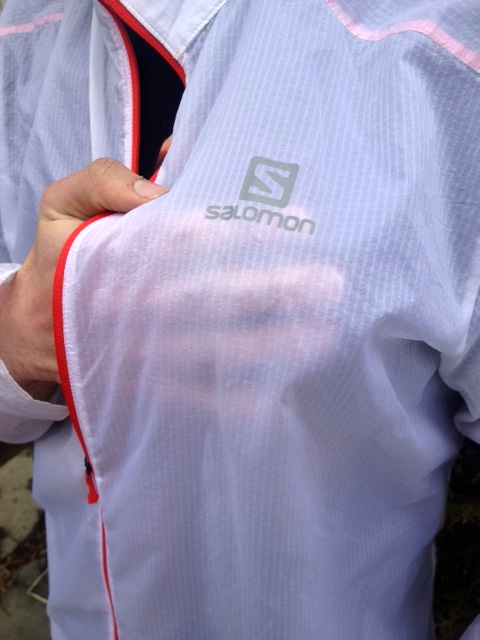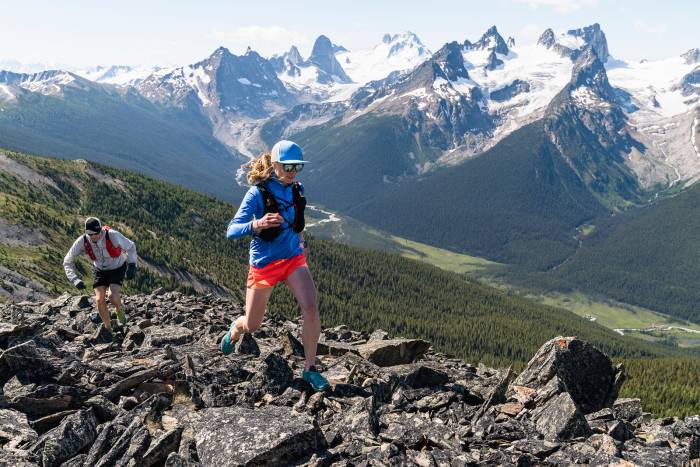
Kilian Jornet of Spain is widely regarded as a top mountain runner and ski mountaineer. This week he was forced to call in a rescue for himself and partner Emelie Forsberg due to bad weather and an unspecified “problem” near the summit of Aiguille du Midi (image above) in Chamonix, France.
Even top athletes can get in trouble out there. For anyone who runs mountain trails, it’s wise to be prepared for the worst — and this includes bringing the right gear.
Said Jornet of his rescue, “This is a warning that the mountains are a hard and dangerous place, even when precautions are taken.” He continued, “A high price can be paid for failures, especially when traveling light.”

While the details of Forsberg and Jornet’s incident are a little vague, Jornet notes on his blog that they carried climbing gear and “light materials — short sports leggings, fine down jackets, and trainers.”
If the world’s best ultra runners are at risk in the mountains, so is everyone else. With this in mind, we put together a list of must-bring safety equipment for summer trail running.
The first four items below are mandatory gear during many trail races, including the TransRockies Run, which I have raced in twice. It crosses 12,000-foot Hope Pass and Vail Mountain. Keep in mind that races are supported by medics, aid stations and organizers. On remote training runs, you (and ideally your partner) should be sufficient and prepared to self-rescue or spend a night out in bad weather if things go awry. —Sean McCoy
Jacket — If you run in the mountains, you need a windproof, waterproof (or water resistant at the very least) jacket. With many companies making quality pieces that fold down to almost nothing, there is no excuse not to carry one in your pack or even a pocket on the mountain trail.

I have used the above Gore jacket for several races during the past year and found it effective, even in a howling snowstorm, and very light at 3.1 ounces. The nylon Windstopper garment costs $159. Other jackets in this class include the Houdini from Patagonia, Salomon Light Jacket, Fuji Packable Jacket from Asics, and the LSD Lite Jacket III from Brooks Running.

Headwear — Heat is lost quickly through an uncovered head. A light hat or Buff (handkerchief) that covers the ears is mandatory equipment in many mountain races. I choose the Buff for its versatility. It’s a small and light poly piece, and it works as a beanie, neck gaiter, or sweat band.
Gloves — When an afternoon thunderstorm rolls in, you’ll be glad you packed a pair of light gloves. Don’t go too light on this one — if you actually need them, you will be glad to have something with a little more insulation than a liner glove. Light and windproof, the Eddie Bauer Polartec WindPro Gloves ($30) fit the bill.

Emergency Blanket — I have only used an emergency blanket once, when stuck near the summit of a 14er in the Sangre de Cristo Mountains in a raging, all night snowstorm. I give it credit for keeping me alive with all my fingers and toes intact. When the sh*t hits the fan, this $4.50, two-ounce piece of gear (like the SOL Emergency Blanket) can quite literally save your ass.
The following items are listed as “highly recommended” for the TransRockies. We consider them critical for unsupported running of more than a half-hour from a car or safety in areas where other people are rarely seen.
Insulating Clothing Layer — This varies a lot depending on the time of year and weather, but can range from a long-sleeve polyester or merino wool base layer to a light packable down sweater. Throw it in the pack for immediate extra warmth when needed.
Light Source — A small headlamp or flashlight weighs mere ounces. But if you’re stuck out after dark it’s essential to finding the trail and getting home. Or, a light can be used as a signal for rescue.
Small First Aid Kit — Be prepared to care for minor injuries in the field. Adventure Medical Kits offers the Ultralight/Watertight .3, which carries all you should need in a 2.3 ounce package for just $9.
ID and Money — For long runs, it’s a good idea to keep a few bucks and an ID in your pack. It could come in handy if you get lost and need to refuel at a convenience store.
Sunscreen — Put it on before you start. Lip balm, too.
Electrolyte Capsules — A long day of running saps the body of electrolytes. Replenish them as you do water and fuel.
Food — Calories keep you going. They can also warm you up. Pack energy gels, bars, cookies, jerky… whatever it takes. Have some “fuel” available out there. On serious endurance runs we often eat 100 – 200 calories an hour to keep going for the long haul.
Hydration Pack With Water — While many runners use handheld bottles, a pack is critical to carry emergency items and food for long runs.
Cell Phone — Just don’t count on it. Reception is spotty or non-existent in many mountain regions. A SPOT device, Satellite phone, PLB, or other emergency device might be a better idea if you’re going deep.

Map and Compass — Know where you are, and where you’re going — at all times. Stay on the map and don’t get lost.
Strike-Anywhere Matches — Carry them in a waterproof container with a bit of newspaper to start a fire if things get bad.
Pocket Knife – Small and light, this universal tool is a must in the backcountry. Baladeo makes an elegant and effective knife that weighs just a bit over one ounce.
—Sean McCoy is a contributing editor. He reported from the TransRockies Run in Colorado last month.








